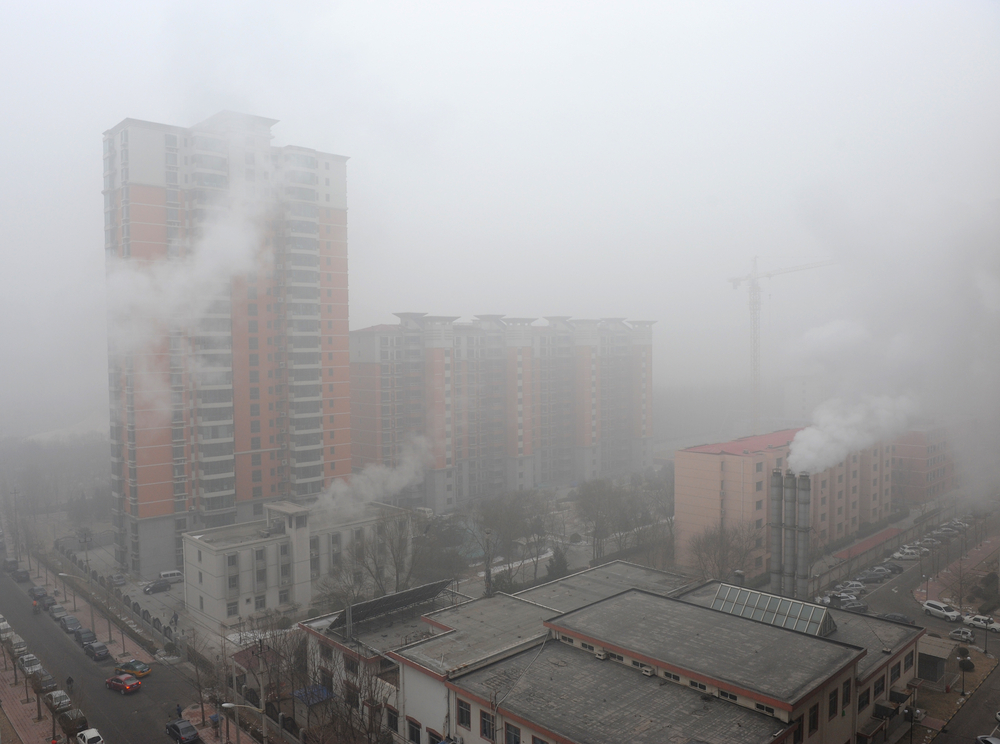Will China's New Pollution Plan Matter?


Barbara Finamore is senior attorney and Asia director for the Natural Resources Defense Council (NRDC). This Op-Ed was adapted from a post on the NRDC blog Switchboard. Finamorecontributed this article to LiveScience's Expert Voices: Op-Ed & Insights.
As China prepares to celebrate the Mid-Autumn Festival, a traditional time for viewing the harvest moon, the government has announced a new plan that may make it easier to see the moon through the smog.
On September 12, the State Council (China's cabinet) unveiled its long-awaited "Atmospheric Pollution Prevention Action Plan" 《大气污染防治行动计划》in response to the severe air pollution that has increasingly plagued China.
The plan calls the current air-pollution situation "grim" and acknowledges that it is "harming people's health and affecting social harmony and stability."
This year, China has seen some of the worst air pollution in recent memory, severe enough to become the No. 1 cause for social unrest and the source of a 15-percent drop in tourist visits to Beijing during the first half of 2013. The air pollution is also causing over a million premature deaths a yearand billions of dollars in environmental damages.
The goal of the new plan is to improve the air quality of the entire country by 2017, while imposing stricter air-pollution reduction guidelines in three key industrial areas surrounding Beijing, Shanghai and Guangzhou. Specifically, the plan pledges to:
- Reduce Particulate Matter 10 (PM 10) levels in cities nationally by at least 10 percent from 2012 levels;
- Reduce Particulate Matter 2.5 (PM 2.5) levels in Beijing, Tianjin and Hebei (BTH) by 25 percent, in the Yangtze River Delta (YRD) by 20 percent, and in the Pearl River Delta (PRD) by 15 percent;
- Control coal consumption by establishing medium- and long-term targets for coal consumption;
- Prohibit the approval of new coal-fired power plants in BTH, YRD and PRD (with the exception of combined heat and power plants), while requiring existing coal-consuming projects to implement coal reduction and substitution;
- Reduce the proportion of coal in the energy-consumption mix to 65 percent by 2017 (from around 67 percent in 2012);
- Achieve negative coal-consumption growth in the three key air-pollution areas (BTH, YRD and PRD) by replacing coal with electricity generated from natural gas and non-fossil fuel energy;
- Cut iron-making and steel-making capacity by 15 million tons in 2015;
- Control the number of automobiles on roads — Beijing, Shanghai, Guangzhou and other large Chinese cities should "strictly" restrict the number of vehicles to curb pollution while other cities should have "reasonable" controls on the number of vehicles;
- Increase non-fossil fuel (wind, solar) from 9.1 percent in 2012 to 13 percent by 2017 and increase shale-gas production.
The plan also briefly mentions developing pollution controls for construction equipment and non-road mobile sources, including ships. Controlling marine emissions would have a major impact on reducing air pollution in the key industrial areas targeted by this plan, since they are also some of the largest and most densely populated port regions in the world.
Get the world’s most fascinating discoveries delivered straight to your inbox.
Civic Exchange, a Hong Kong-based think tank, estimates that an Emission Control Area (a designated area with stringent engine-emission standards and fuel sulfur limits for ships) would reduce sulfur-dioxide emissions from ocean-going vessels by 95 percent and particulate emissions by over 85 percent across the entire Pearl River Delta, reducing the number of avoidable deaths by 91 percent. NRDC hopes this new plan will give a strong boost to the regulation of marine emissions in China.
China's comprehensive new plan is a major step in the right direction, although it could have gone a lot further. The new limits are still far below the levels recommended by the World Health Organization (Beijing's average PM 2.5 levels will be reduced to about 60 micrograms per cubic meter, compared to the WHO exposure limit of 10 micrograms per cubic meter). This difference cannot be justified solely on economic grounds.
As my colleague Yang Fuqiang told the South China Morning Post, cities such as Beijing and Tianjin should be required to cut levels of PM 2.5 — the air pollutant most dangerous to human health — by more than 25 percent, since they have more economic resources.
The new plan could also have set quantified limits on coal consumption for key regions of China, but allows the regions to set their own limits.NRDC has been strongly advocating for a cap on coal consumption in China and is working with the government and other NGOs in China to develop an effective and enforceable coal-cap policy for China. NRDC believes there are five main components of setting an effective coal cap strategy:
- Working with the largest coal-consuming sectors and regions to help them develop integrated plans for capping coal use through more efficient technologies, fuel switching and closing outdated production capacity;
- Strengthening enforcement of coal consumption and emissions targets and standards through improved data and enforcement tools;
- Continuing to scale up energy efficiency and renewable energy;
- Developing responsible standards and best practices for shale-gas and nuclear power development;
- Helping to implement carbon-trading and carbon-tax pilot programs.
The new plan is a much-needed signal that China is serious about tackling the root cause of air pollution by reducing its reliance on coal and other dirty fuels. But as always, it will be important to see how effectively China will measure and enforce those targets.
This post was coauthored by Finamore's colleagues Alvin Lin and Christine Xu. This Op-Ed originally appeared as "China Pledges to Tackle Air Pollution with New Plan" on the NRDC blog Switchboard. The views expressed are those of the author and do not necessarily reflect the views of the publisher. This version of the article was originally published on LiveScience.



